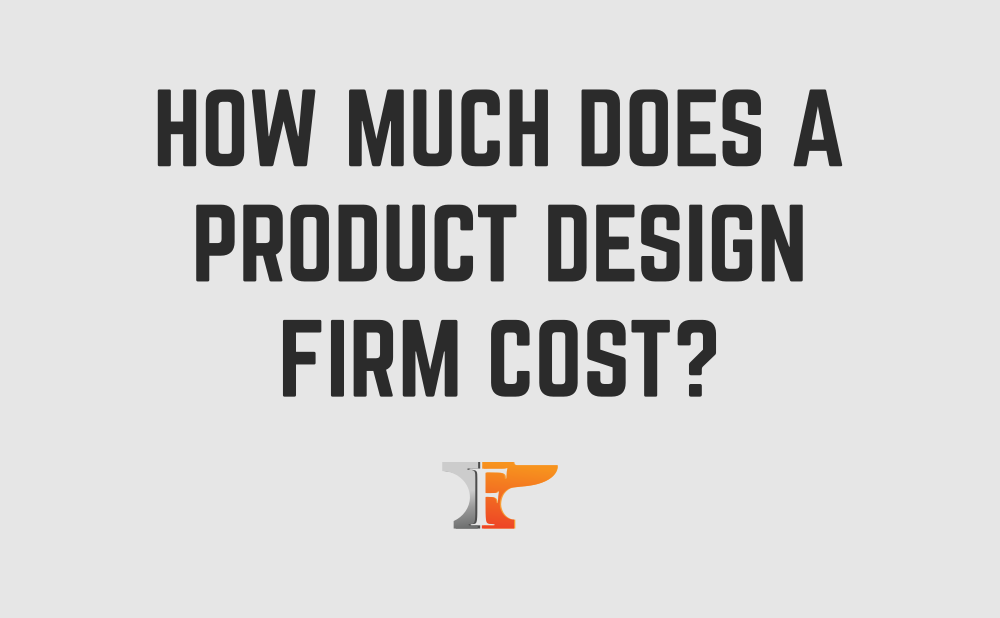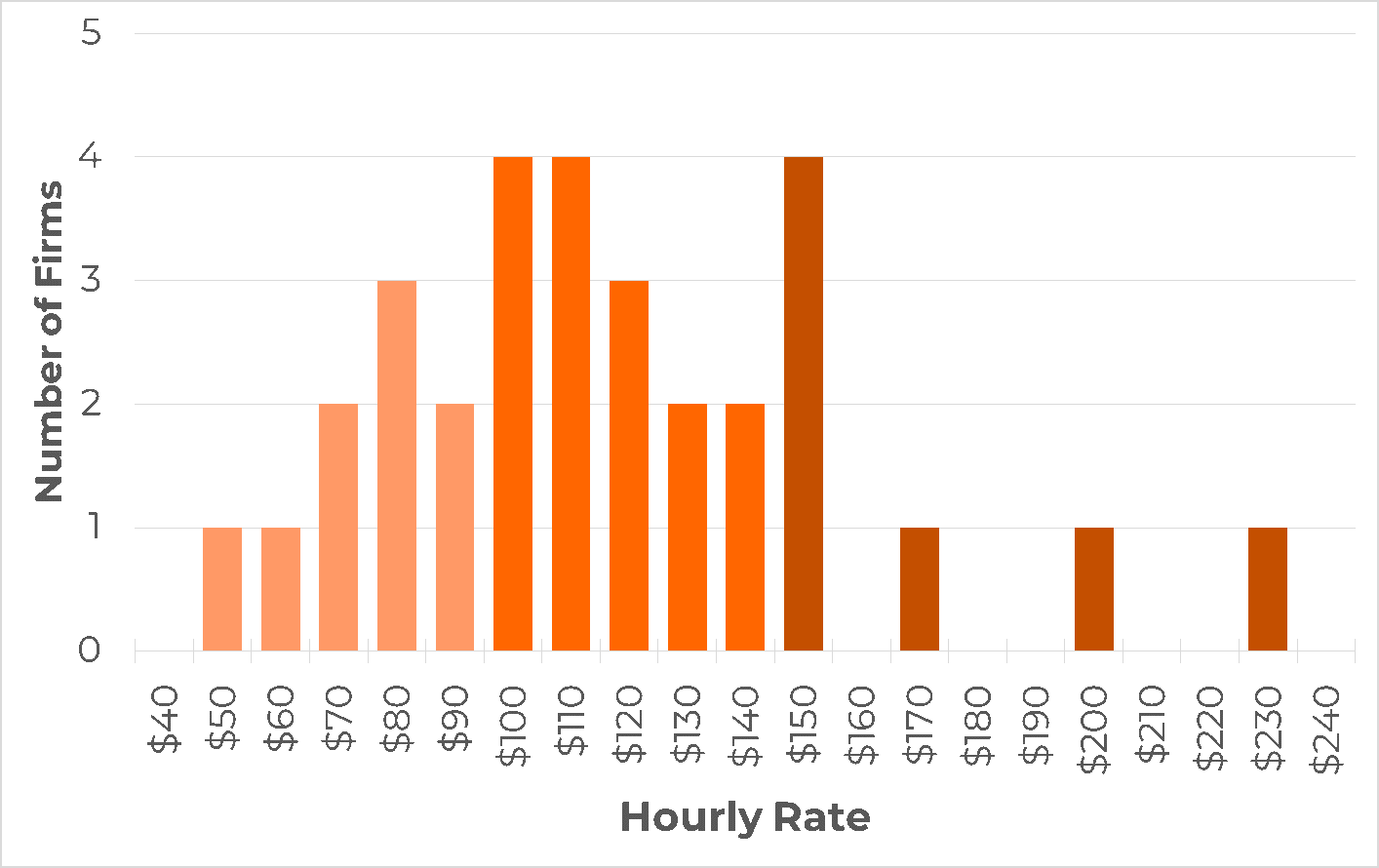HOW MUCH DOES A PRODUCT DEVELOPMENT FIRM COST? – HOURLY RATES

"What is your hourly rate?" is one of the first questions we get when we start talking to a prospective client. In our experience this question means the client is trying to gauge how much a project will cost, or compare our rate to another firms. Though we feel there are better ways to estimate project costs and evaluate firms, the question still stands.
In product development, as with most professional services, price is usually set by some form of internal hourly rate, based on the firms costs and margin. The price for any project is then simply a multiple of this hourly rate and the number of hours it took to complete the work, plus any other expenses.
Forge Product Development's bulk hourly rate is $115 per hour. However our rate is not, in itself, useful if you do not know the rates of our competitors. To help give you context when comparing rates, we gathered and analyzed pricing data for mechanical design work from over 30 other product development companies.
All prices below are in US dollars per engineering hour.
Summary of our data:
- The highest rate was $230 for an "Engineering Director"
- The lowest was $50 for an "Overseas Draftsman"
- The average rate across the industry was $120
- The three price tiers:
- < 95 - Draftsman or Overseas Labor
- 95 -150 - Experienced Engineers
- > 150 - Senior Management and Principle Engineers
- Forge Product Development's bulk hourly rate is $115

As you can see, hourly rates for firms can vary widely. The primary drivers of price disparity were experience of the engineer and location. Firms charged more per hour for access to their engineering managers and directors than they did for less skilled draftsman. Likewise, a firm that outsources to employees overseas had lower costs then those located in high cost of living states.
Using these factors, we separated the firms rates into three "Price Tiers". These divisions, indicated in the chart by the varying colors, show the rates various experience levels and locations were priced at. These tiers are not strictly defined barriers, as some firms priced above or below their tier, rather they are rules of thumb that can be used to quickly gauge a firms rate.
When comparing firms and rates, be sure you know the quality of the engineer and service you are paying for. There are pros and cons to overseas draftsman and executive engineers and each has their place. The key, as a buyer, is to figure out your specific needs and match them to the right firm, so you get the optimal combination of service, technical ability, and price.
Forge Product Development cautions only comparing rates when shopping for a new design firm. We recomend a two part system that is designed to vet and then test the prospective firm. To learn more, check out the first article on our method here "9 Questions to Evaluate a Product Development Firm"
What hourly rates have you been quoted in the past, and how was your quality of service with that firm? Let us know in the comments!

How do you factor in cost of Prototyping/ how many will be needed? Do you have the means to prototype in house or it is contracted out? Do you favor looks like models or works like models? Do you have a strategy to keep clients excited and the project moving forward while prototype cost accumulate quickly? Thanks!!
Derek,
Great questions!
1 – Prototype costs are typically separate from billable hours. They can be included in a quote, if enough information is known up front. (see our post on pricing for more information on the impact of uncertainty: https://forgeproductdevelopment.com/blog/2018/11/11/forge-pricing-models/ )
2 – This depends a lot on the product and type of prototype needed. Typically, we outsource the manufacturing of components to various trusted sources and do the assembly in house. We can use your existing suppliers as well, if you have those types of resources.
3 – Again this varies by project, and there are situations where one or the other would be best. We can help you make that decision when the time comes.
4 – We try to communicate with our clients as much or as little as they like. Some clients want constant updates and others just want to know when they can pick up the final design. We will work with you and help give guidance and perspective during the slow or expensive parts of a project.
these rates are pretty low for 2024 standards, how are rates today, when was this published?
You are correct, our rates have kept pace with inflation, since this was posted back in 2018. Current rates are closer to $150/hr.